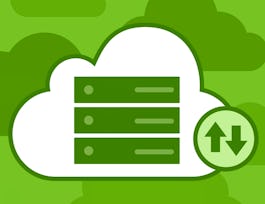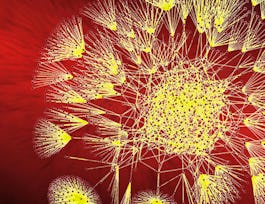Want to understand your data network structure and how it changes under different conditions? Curious to know how to identify closely interacting clusters within a graph? Have you heard of the fast-growing area of graph analytics and want to learn more? This course gives you a broad overview of the field of graph analytics so you can learn new ways to model, store, retrieve and analyze graph-structured data.



Graph Analytics for Big Data
This course is part of Big Data Specialization

Instructor: Amarnath Gupta
Sponsored by RIA PAYMENT INSTITUTION
53,557 already enrolled
(1,267 reviews)
Skills you'll gain
Details to know

Add to your LinkedIn profile
6 assignments
See how employees at top companies are mastering in-demand skills

Build your subject-matter expertise
- Learn new concepts from industry experts
- Gain a foundational understanding of a subject or tool
- Develop job-relevant skills with hands-on projects
- Earn a shareable career certificate


Earn a career certificate
Add this credential to your LinkedIn profile, resume, or CV
Share it on social media and in your performance review

There are 5 modules in this course
Meet your instructor, Amarnath Gupta and learn about the course objectives.
What's included
1 video1 reading
Welcome! This week we will get a first exposure to graphs and their use in everyday life. By the end of the module you will be able to create a graph applying core mathematical properties of graphs, and identify the kinds of analysis questions one might be able to ask of such a graph. We hope the you will be inspired as to how graphical representations might enable you to answer new Big Data problems!
What's included
8 videos2 readings1 assignment1 peer review2 discussion prompts
What's included
17 videos3 readings2 assignments2 discussion prompts
Welcome to the 4th module in the Graph Analytics course. Last week, we got a glimpse of a number of graph properties and why they are important. This week we will use those properties for analyzing graphs using a free and powerful graph analytics tool called Neo4j. We will demonstrate how to use Cypher, the query language of Neo4j, to perform a wide range of analyses on a variety of graph networks.
What's included
7 videos9 readings2 assignments
In the last two modules we have learned about graph analytics and graph data management. This week we will study how they come together. There are programming models and software frameworks created specifically for graph analytics. In this module we'll give an introductory tour of these models and frameworks. We will learn to implement what you learned in Week 2 and build on it using GraphX and Giraph.
What's included
11 videos6 readings1 assignment
Instructor

Offered by
Why people choose Coursera for their career




Learner reviews
1,267 reviews
- 5 stars
55.88%
- 4 stars
26.67%
- 3 stars
11.12%
- 2 stars
3.55%
- 1 star
2.76%
Showing 3 of 1267
Reviewed on Oct 27, 2018
I found a new love in this course Neo4j. Graphs are really powerful. You should expect a very intensive theoretical and hands-on knowledge to takeaway from this course. Think like a vertex ....
Reviewed on Oct 4, 2018
Great course!!! excellent information, instructions and examples (including some troubleshooting that helps us to learn things simulating everyday challenges).
Reviewed on Dec 8, 2018
Graphs are quite interesting and in many cases offer a better representation than relational databases.
Recommended if you're interested in Data Science

University of Michigan

Duke University

Google Cloud

University of California San Diego

Open new doors with Coursera Plus
Unlimited access to 10,000+ world-class courses, hands-on projects, and job-ready certificate programs - all included in your subscription
Advance your career with an online degree
Earn a degree from world-class universities - 100% online
Join over 3,400 global companies that choose Coursera for Business
Upskill your employees to excel in the digital economy

